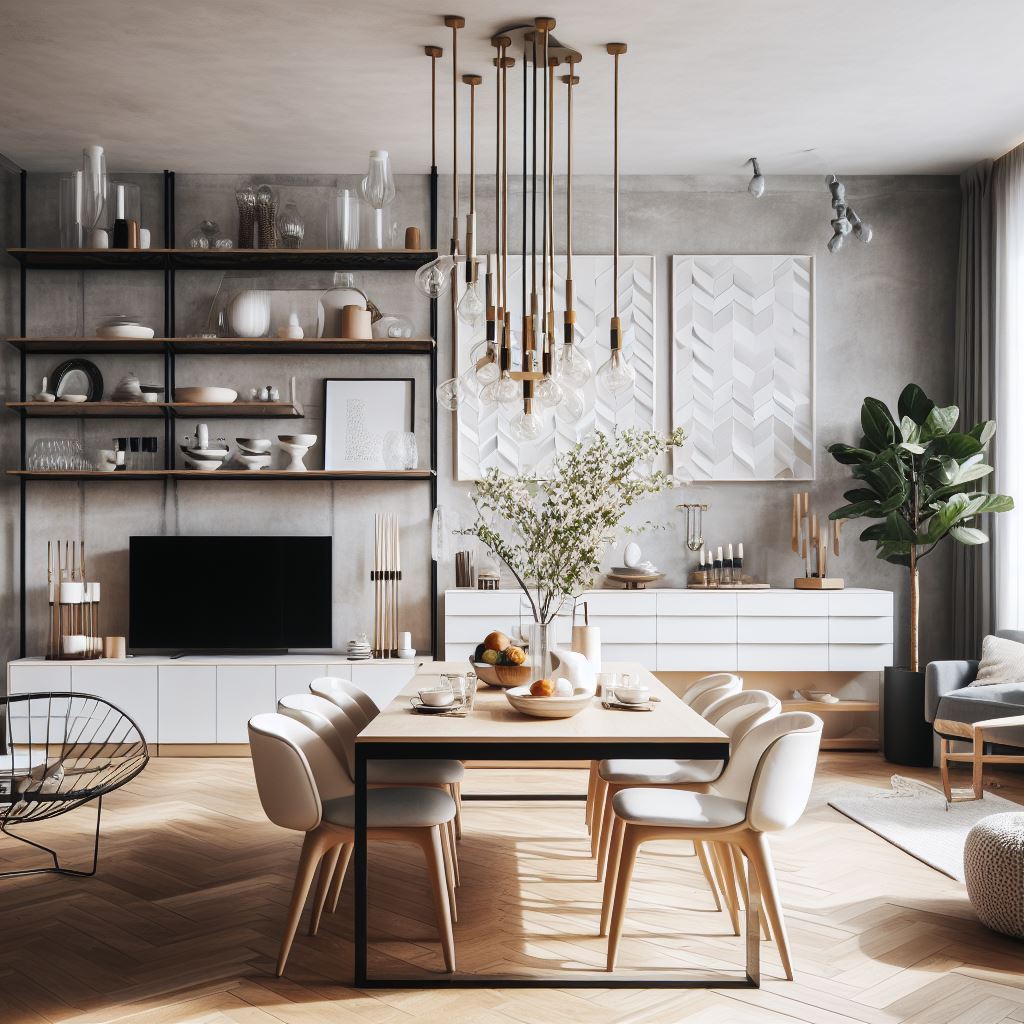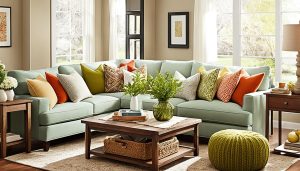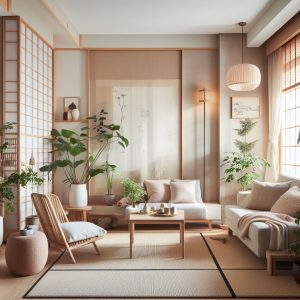Imagine walking into a dining room that effortlessly blends style and warmth, enticing you to sit down and enjoy a meal. In this article, you will discover practical tips on how to decorate your dining room in a way that is not only visually stunning but also creates a welcoming ambiance. From choosing the right furniture and lighting to incorporating tasteful accents, we will guide you through the process of transforming your dining space into a stylish and inviting sanctuary for family and friends. So, grab a seat and let’s dive into the world of dining room decor!
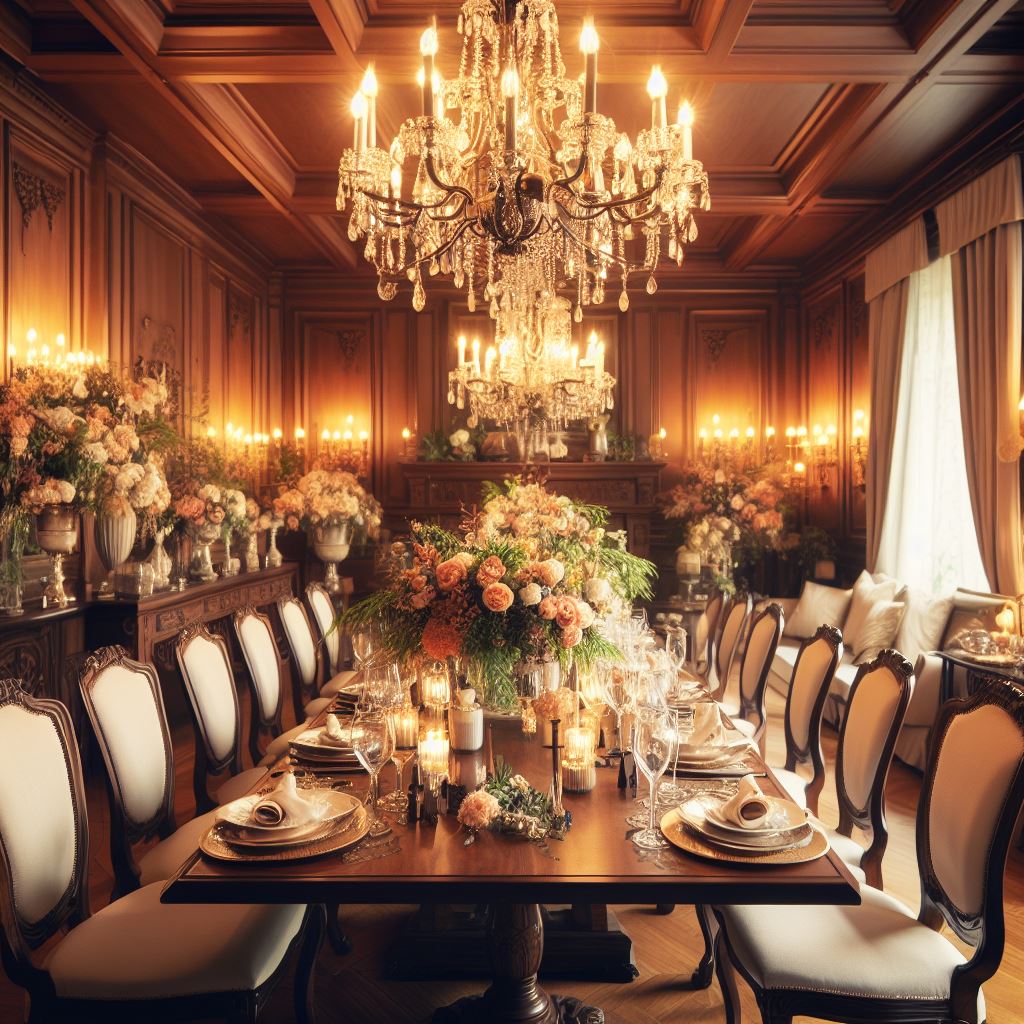
Choose a Color Scheme
When it comes to decorating your dining room, choosing the right color scheme is crucial. First, consider the size and style of the room. If your dining room is small, opting for lighter colors can help create the illusion of a larger space. On the other hand, if you have a large dining room, bolder colors can add depth and drama.
Next, think about the mood you want to create in your dining room. Do you want it to feel warm and cozy, or light and airy? The color scheme you choose can greatly contribute to the overall ambiance of the room. Warm tones like reds, oranges, and yellows can create a cozy and inviting atmosphere, while cool tones like blues and greens can give off a more calming and serene vibe.
Once you have considered the size and style of the room, as well as the desired mood, it’s time to pick a main color and coordinating accents. Choose a main color that will serve as the foundation for your dining room’s color scheme. This color can be used on the walls, as well as in accents such as curtains, rugs, and upholstery. Then, select coordinating accent colors that complement the main color and add visual interest to the space.
Select the Right Furniture
Choosing the right furniture for your dining room is essential for both style and functionality. Start by measuring the room and planning the layout. Consider the size and shape of your dining room when selecting furniture, ensuring that there is enough space for people to comfortably move around the table.
When it comes to the dining table, choose one that fits the space and accommodates the number of people you typically host for meals. Rectangular tables are a classic choice and can comfortably seat a larger number of people. If you have a smaller dining room, consider a round or square table, which can save space while still providing ample seating.
Consider different chair styles and materials to add personality and comfort to your dining room. Upholstered chairs can provide a cozy and luxurious feel, while wooden chairs can add a touch of warmth and elegance. Don’t be afraid to mix and match different chair styles for a unique and eclectic look.
Create a Focal Point
Every dining room needs a focal point that draws the eye and becomes the centerpiece of the space. One way to create a focal point is by hanging a statement chandelier above the table. A chandelier not only provides functional lighting but also adds a touch of elegance and sophistication to the room.
Another option is to install a decorative mirror on one wall. Mirrors can make a space feel larger and reflect light, brightening up the dining room. Choose a mirror with an interesting frame or shape that enhances the overall style of the room.
If you have statement pieces or collectibles that you want to showcase, consider setting up a display shelf or cabinet. This allows you to highlight your favorite items and add personality to the space. Choose a shelving unit or cabinet that complements the overall style of your dining room and creates visual interest.

Enhance the Lighting
Lighting plays a crucial role in setting the mood and creating a welcoming atmosphere in your dining room. To enhance the lighting, consider combining different types of lighting. Use a combination of ambient lighting, such as overhead lights or chandeliers, and task lighting, such as table lamps or pendant lights.
To create ambience, install dimmers for your lighting fixtures. Dimmers allow you to control the intensity of the light, providing flexibility and the ability to adjust the ambiance as needed. This is particularly useful during dinner parties or intimate gatherings, where you may want to create a cozy and inviting atmosphere.
In addition to overhead lighting, consider adding wall sconces or pendant lights to further enhance the lighting in your dining room. These fixtures can provide additional light sources while adding a decorative element to the space. Choose fixtures that complement the overall style and color scheme of your dining room.
Add Textiles and Textures
Adding textiles and textures to your dining room can add visual interest and create a more inviting atmosphere. Use table linens to add color and texture to your dining table. Choose tablecloths or table runners that complement the color scheme of your dining room and add a touch of elegance or playfulness to the space.
Incorporate cushions to dining chairs to not only add comfort but also introduce different textures. Consider using cushions with different patterns, materials, or colors to add visual interest and make the dining chairs more inviting.
Curtains or blinds can also add texture and style to your dining room while providing privacy and controlling natural light. Opt for curtains or blinds that complement the overall color scheme and style of your dining room. Sheer curtains can create a light and airy feel, while heavier curtains can add a sense of luxury and warmth.
Incorporate Art and Wall Decorations
Art and wall decorations can truly enhance the style and personality of your dining room. Hang a statement art piece or create a gallery wall to add visual interest and create a focal point. Choose artwork that complements the style and color scheme of your dining room. Abstract paintings can add a modern and vibrant touch, while landscape photography can create a more serene and calming ambiance.
Consider adding wall shelves or floating shelves to display smaller art pieces or decorative items. This not only adds additional visual interest but also provides an opportunity to showcase your personal style and collection. Play around with different heights, shapes, and sizes of shelves to create a dynamic and visually appealing display.
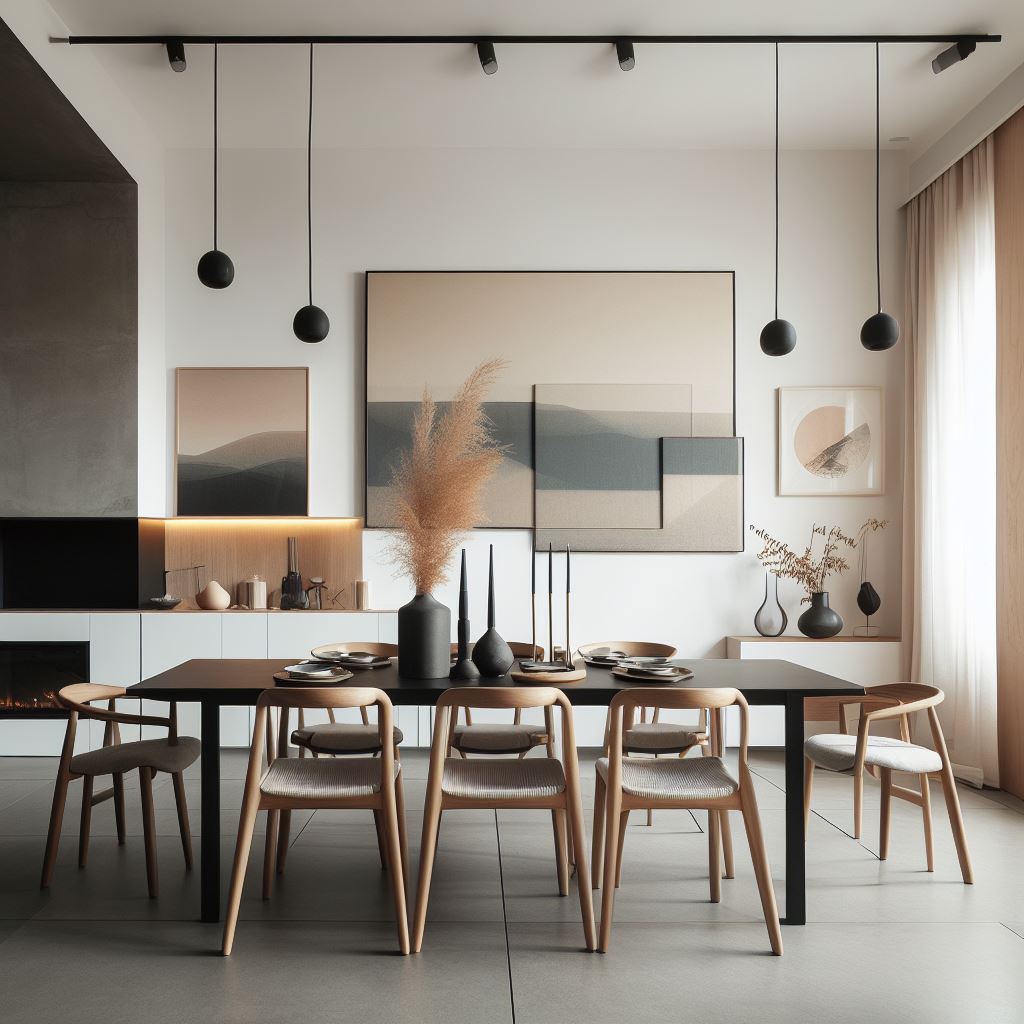
Pay Attention to Flooring
Choosing the right flooring for your dining room is essential for both aesthetic and practical reasons. Hardwood or laminate flooring can add elegance and warmth to your dining space. The natural beauty and durability of these materials make them a popular choice for dining rooms. Opt for a walnut or oak finish for a classic and timeless look.
If you prefer low-maintenance options, consider tiles or vinyl flooring. These materials are easy to clean and can withstand spills and heavy traffic. Tiles come in a wide range of colors and patterns, allowing you to personalize the look of your dining room. On the other hand, vinyl flooring can mimic the look of hardwood or other materials, providing versatility and durability.
To define the dining area and add warmth to the space, incorporate a rug under the dining table. Choose a rug that complements the overall style and color scheme of your dining room. Persian rugs can add a touch of elegance and sophistication, while geometric patterns can create a more modern and vibrant feel.
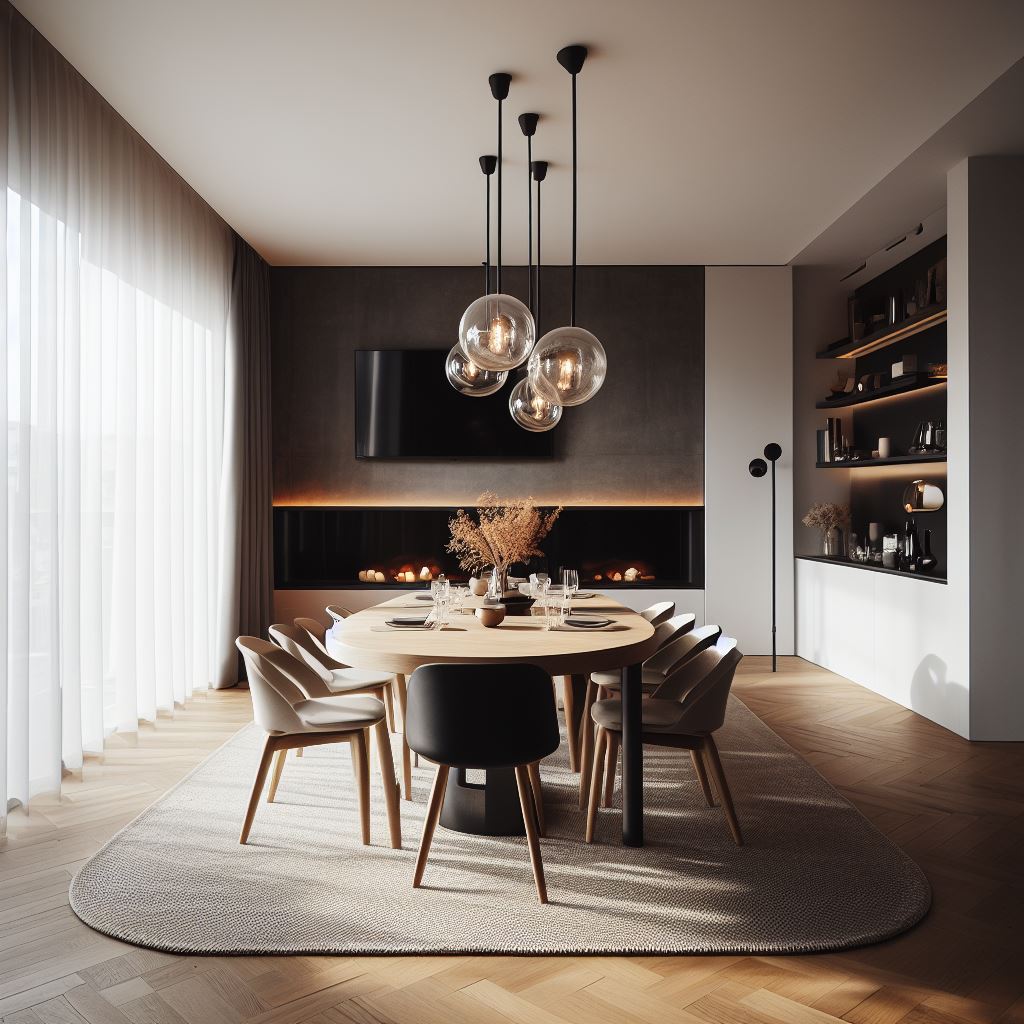
Utilize Storage Solutions
Storage is often an overlooked aspect of dining room design, but it can greatly contribute to a clutter-free and inviting space. Choose furniture with built-in storage, such as sideboards or buffets, to store tableware, linens, and other dining room essentials. This allows you to keep the dining area organized and easily accessible.
In addition to built-in storage, consider installing floating shelves or a sideboard for extra storage space. Floating shelves can be a stylish way to display decorative items or store extra dinnerware. A sideboard can provide both storage and surface area for serving food or displaying decor. Choose storage solutions that complement the style and color scheme of your dining room.
To hide clutter and maintain a clean and organized dining room, incorporate decorative baskets or boxes. These can be placed on shelves or under the dining table, providing a discreet and stylish way to store items such as napkins, placemats, or extra dining accessories.
Decorate the Tabletop
The tabletop is the centerpiece of your dining room, so it’s important to give it attention and decorate it thoughtfully. Start by selecting a centerpiece that suits the dining style and complements the overall theme of your dining room. It could be a floral arrangement, a sculptural piece, or a collection of candles. Choose a centerpiece that is proportionate to the size of your dining table and allows for easy conversation across the table.
Use place mats or table runners to add style and protect your table surface. Coordinate the color and pattern of the place mats or table runners with the overall color scheme and style of your dining room. This not only adds visual interest but also protects your table from scratches, spills, and stains.
Coordinate your dishes, glasses, and cutlery to create a cohesive and stylish table setting. Choose pieces that complement the color scheme and style of your dining room. Consider mixing and matching different patterns or colors to add visual interest and create a personalized and unique look for your dining table.
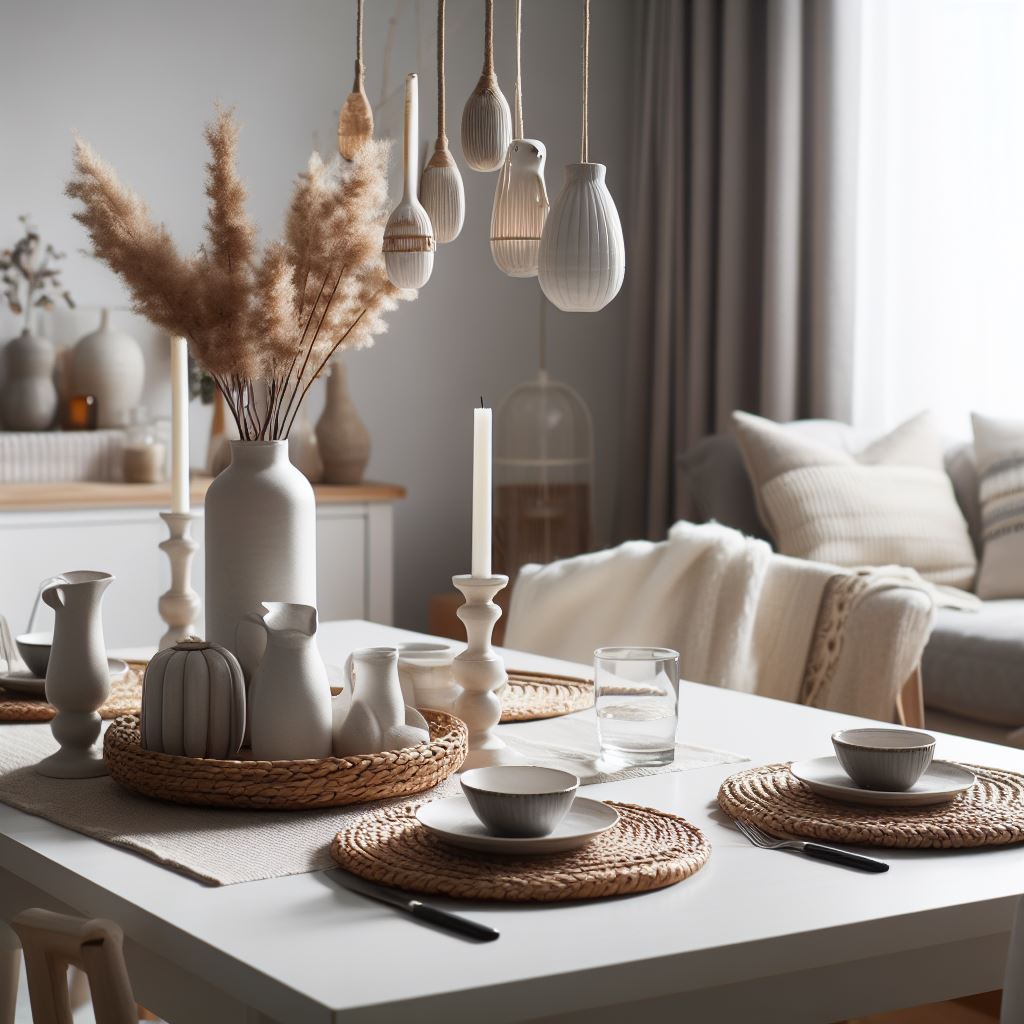
Consider the Wall Color
The wall color can significantly impact the overall look and feel of your dining room. When choosing a wall color, consider the size of the room and the desired atmosphere. For a versatile and timeless look, opt for neutral or light shades such as whites, greys, or beiges. These colors can create a blank canvas and allow your furniture and decor to stand out.
If you’re feeling bold and want to make a statement, experiment with bold or dark colors for your dining room walls. Deep blues, rich greens, or dramatic blacks can add depth and a sense of drama to the space. Just be sure to balance the dark wall color with lighter furniture and decor to prevent the room from feeling too heavy or overwhelming.
When coordinating the wall color with the overall theme of your dining room, consider the color scheme you have chosen. If you have a warm color scheme, opt for wall colors that complement those warm tones. Similarly, if you have a cool color scheme, choose wall colors that complement your cool color palette. This will create a harmonious and cohesive look throughout the dining room.

